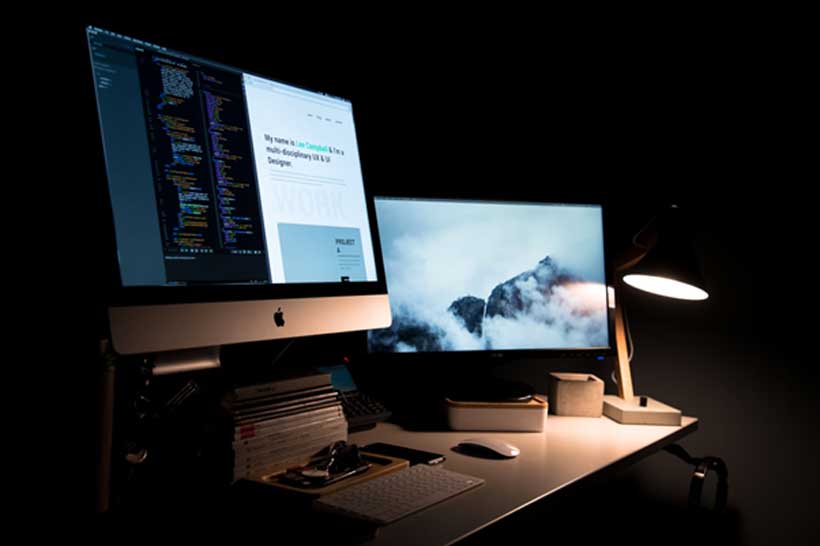Trust us, there are ways of ineffectively using stock photos for web design. It’s so easy to tell when a web developer or designer has used the most basic, boring, stock photos that bring no life or character to the web page. All you have to do is look at them, obviously. And we can’t see why web designers find it so tricky to get right—look for high-quality stock vectors from Depositphotos, and you’ve got a library of them.
Still, the issue isn’t necessarily the quality of the photo (although that’s a big part of it); it’s effectively using them in web design. Read on to find out more.
Picking the Best Stock Photo
We have to ask – why would you pick a bad one?
The process is not one of picking any photo; it’s selecting one that makes sure that it is appropriate for the content and website branding. Studies have found that the perfect image can increase website traffic by up to 400%. Who doesn’t want that?
Let’s use a website designed for a fitness company as a random example. The images most appropriate for it focus on:
- Energy
- Health
- Strength
- Nutrition
Basically whatever the website genre or niche it follows. A simple stock image showing a bowl of fruit will not be adequate.
Still, even a good image that matches branding and content doesn’t matter if it isn’t high-quality. Anything 300 PPI or over is typically considered high resolution. The same goes for Dots Per Inch (DPI), they should be 300 PPI or more. You can find this information by right-clicking on an image and looking at the image properties. And even if you don’t want to try to understand DPI and PPI, you can simply look at stock photos and see if it’s high-quality, sharp, colorful, and eye-catching.
Image Placement on The Webpage
The logical next step is to think about image placement on the webpage. It has more of an impact than you’d think.
The browser’s perception of a webpage is highly dependent on the image position. According to Ogilvy, putting a headline below an image can increase the number of people who read it by 10%. And the purpose of an image is to draw someone’s attention to the entire webpage, not the image itself. Another study found that putting a stock photo at the top of a page can help create a relationship with the audience and deliver information quickly.
Simply put, you can’t just put any decorative picture anywhere on the page.
The placement of the images is also determined by proportions and harmony. A large and attractive image can take up the top fold of your page and work well. It’ll help with visual hierarchy and help the user scan the page easily. Just try not to gold-plate the page.
We’d expect to see a good ratio of images to text throughout most pages to break up the flow of text but don’t take up too much of the white space. Studies show that websites with plenty of whitespace have 35-45% higher visual attention rates than cluttered websites.
Mix in Real Images for More Value
Mix in real images – they add more value and realism to a web page. Stock photos are useful; however, including authentic, original images can create a stronger sense of trust and credibility. While stock photos are widely useful, people still want to see real images—your employees, your products, your home (if you’re a blogger), or your office.
If, say, your website has an About Us page, use pages with actual photos of you, your employees, your family, etc, – whatever relates to your business.
A shorter section, but it needs no further explanation! It’s as simple as mixing things up.
Optimize the Images (SEO and More)
Some 32.9% of Google search queries return image results – don’t think that image SEO doesn’t impact how effective your stock photos will be for your web design. And 60% of customers are more likely to consider contacting a business if a relevant image appears in their search results. And, yes, this article isn’t necessarily focusing on business, but any website should want to be recognized and at least picked for viewing.
The answer is SEO optimizing your images. When appropriately applied, photos can help enhance your website’s search engine optimization and speed, which are the two main components of web design.
SEO-friendly images start with files, including relevant keywords. Instead of calling this file IMG_1234.jpg, it could be best-running-shoes-2024.jpg (as an example). This simple adjustment means search engines better interpret the context of your image, enhancing your website’s SEO.
Image SEO also includes:
- Alt text
- Caching images
- Optimizing image size for web pages
Alt text helps to describe the picture to search engines, increasing your website’s usability and SEO ranking. Writing it is simple: alt text has to be brief, straight to the point with the needed keywords, but not a keyword stuffing case.
The last step is to ensure all your images are cached and optimized for the web. Don’t let massive images and files disrupt the loading times of your website.
Don’t Just Use Photos (Videos and Animations)
Videos are the new text. Studies have found that 81% of people want interactive video content from brands. Video is considered visually rich content that engages and has an 80% information retention rate. They work so well alongside stock photos.
You can include a video of a product tour or company and customer testimonials or simply a vlog-style video if you’re creating a personal blog. Whatever the reason for the website, there’s a reason for a video.
It’s easy to effectively use stock photos. Pick a good photo, good image placement, and focus on everything else relating to it that makes an image great, and you’ll have no issues using stock photos for web design!
